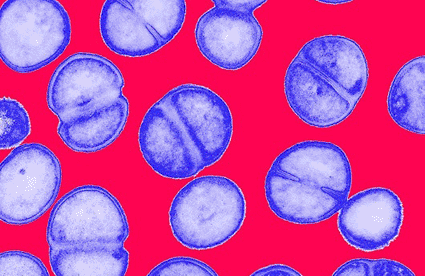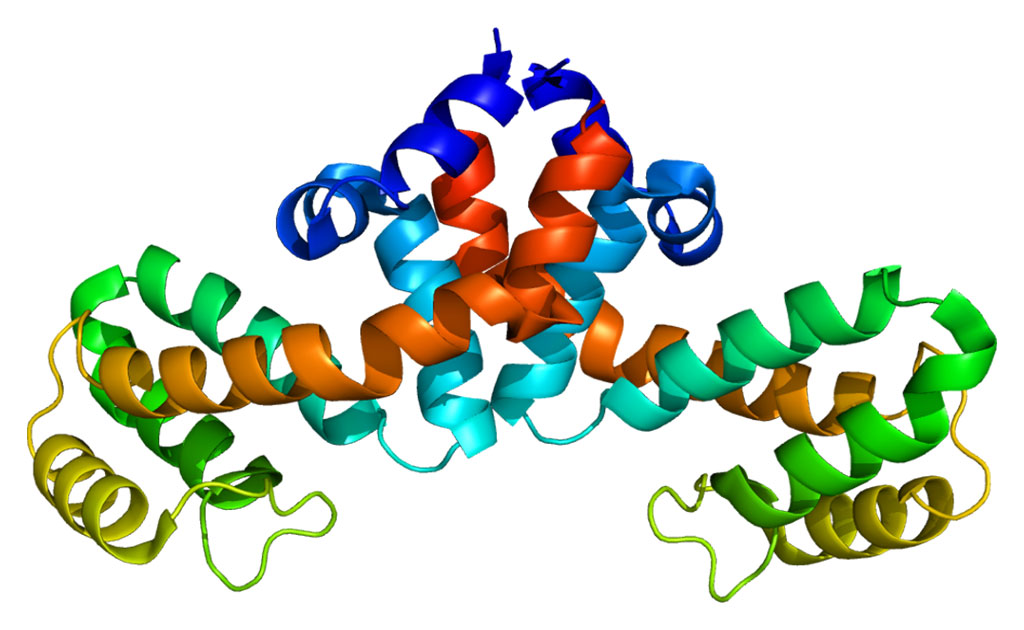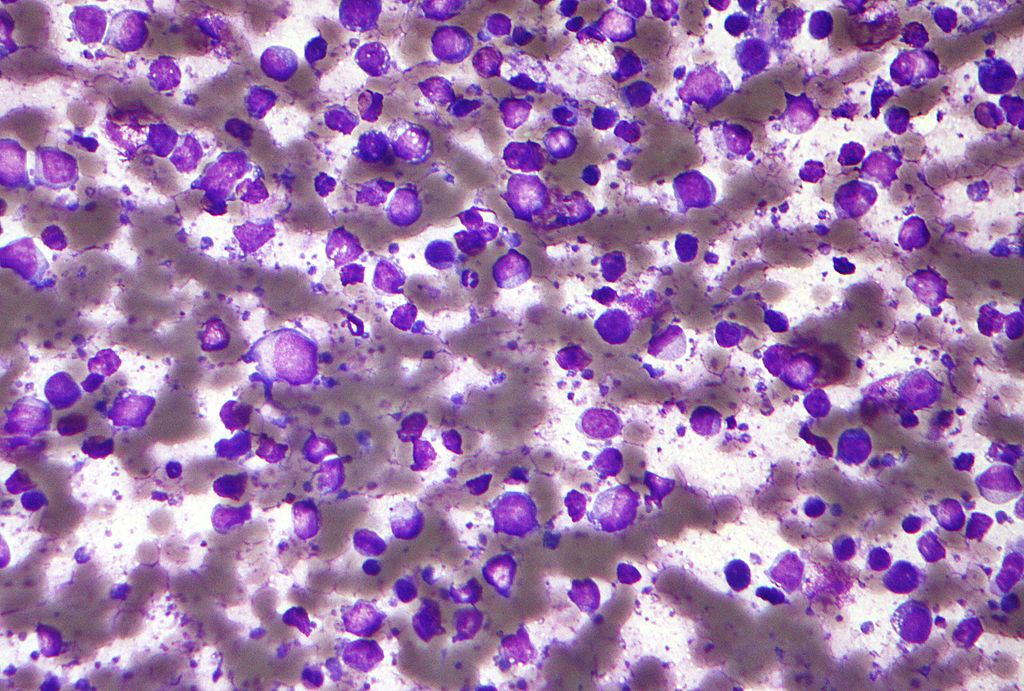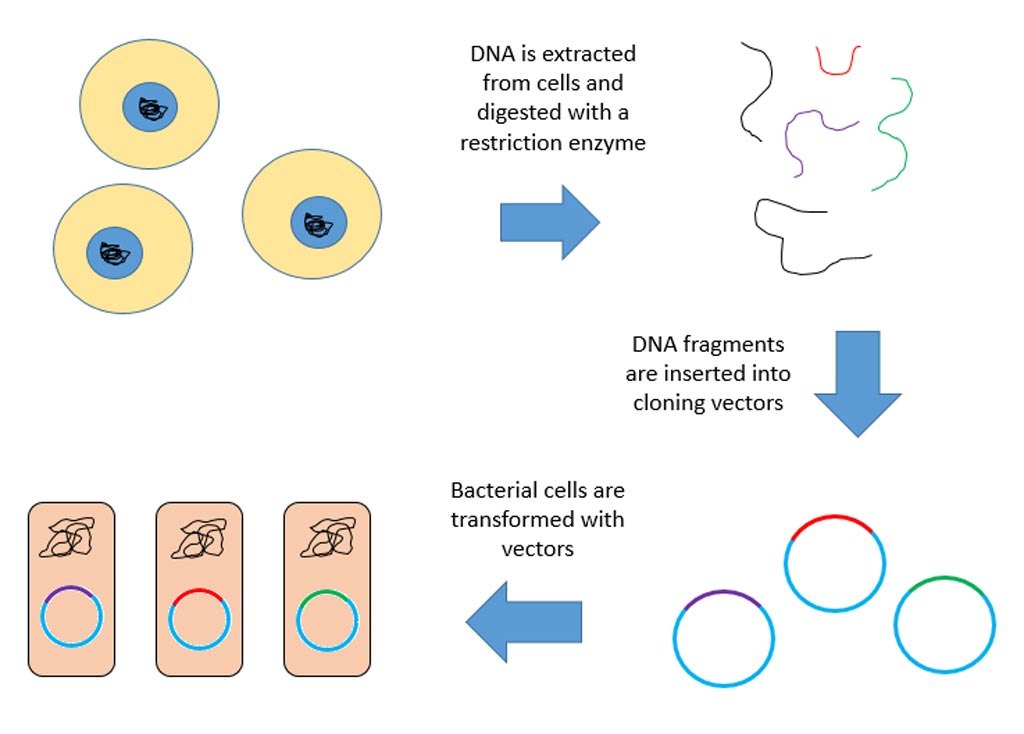A Pair of Synergistic Antibodies Blocks the Bacterial Ribosome
By LabMedica International staff writers
Posted on 17 Feb 2010
Two marginally effective antibiotics have been shown to strongly inhibit MRSA (methicillin-resistant Staphylococcus aureus) when used together.Posted on 17 Feb 2010
Investigators at the University of Illinois (Chicago; USA) and the Weizmann Institute of Science (Rehovot, Israel) studied the properties and mode of action of the two antibodies, lankacidin and lankamycin, which are naturally occurring molecules produced by Streptomyces rochei.

Image: Colored transmission electron micrograph (TEM) of Methicillin-resistant Staphylococcus aureus (MRSA), a Gram-positive, round (coccus) bacterium (photo courtesy Biomedical Imaging Unit, Southampton General Hospital).
Crystallographic analysis published in the February 2, 2010, issue of the journal Proceedings of the [U.S.] National Academy of Sciences (PNAS) revealed that the 17-member polyketide antibiotic lankacidin bound at the peptidyl transferase center of the bacterial large ribosomal subunit. Biochemical and functional studies verified this finding and showed interference with peptide bond formation. Chemical probing indicated that the second antibiotic, lankamycin, bound at a neighboring site - the ribosome exit tunnel. The two antibiotics were able to bind to the ribosome simultaneously and displayed synergy in inhibiting bacterial growth. The binding site of lankacidin and lankamycin partially overlapped binding site of another pair of synergistic antibiotics, the streptogramins.
"What we found most amazing is that the two antibiotics appeared to help each other in stopping pathogens from making new proteins and in inhibiting bacterial growth,” said contributing author Dr. Alexander Mankin, professor of pharmaceutical biotechnology at the University of Illinois.
The Israeli team was directed by Dr. Ada Yonath, professor of structural biology at the Weizmann Institute for Science, who received the 2009 Nobel Prize for chemistry for her pioneering work on the ribosome.
Related Links:
University of Illinois
Weizmann Institute of Science













